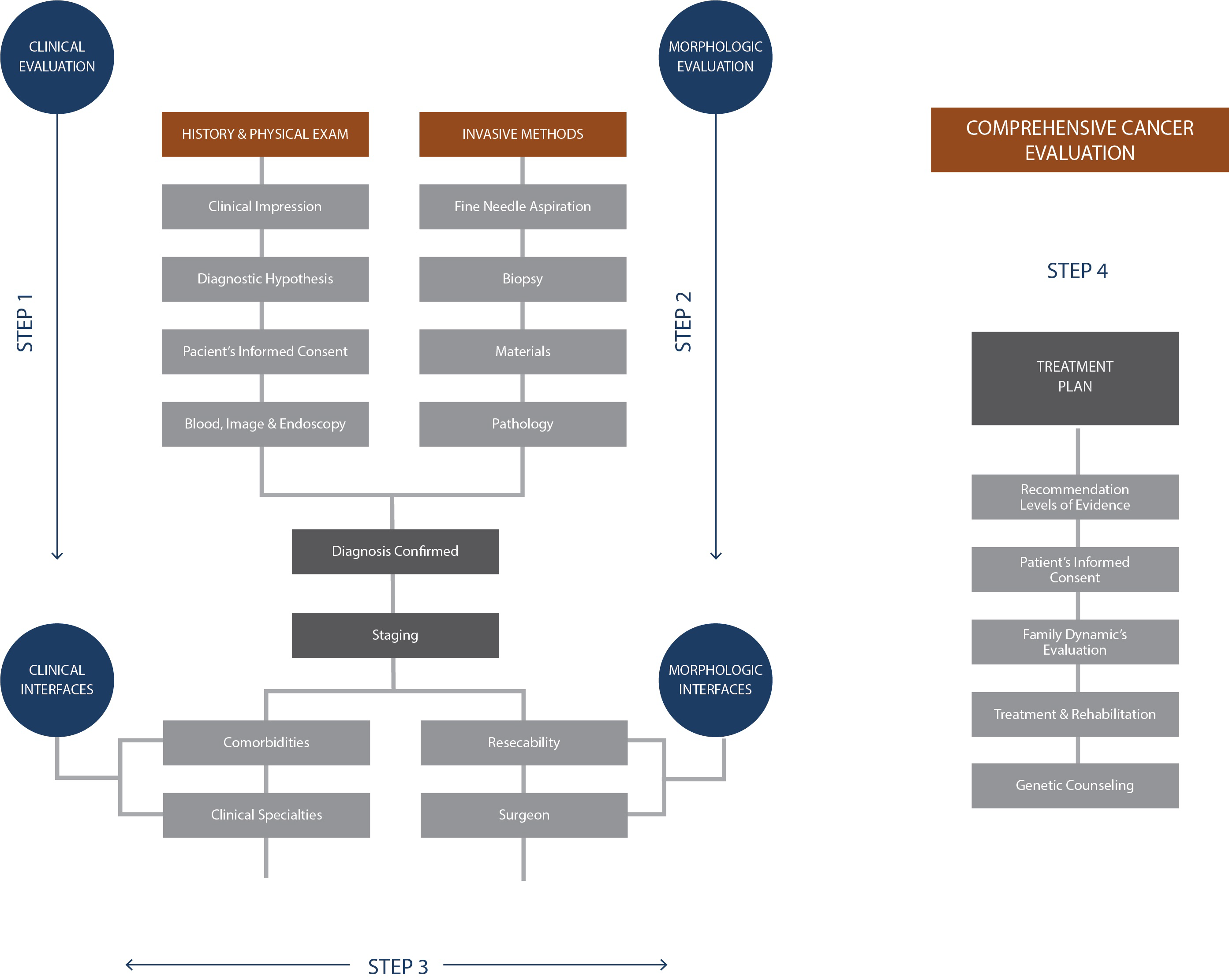DOCTOR’S PERSPECTIVE
To achieve the goals identified from the doctor’s perspective, 4-HNS suggests a comprehensive clinical assessment composed by four simple steps:
STEP 1 / CLINICAL EVALUATION: The attendant physician uploads a detailed description of the history and physical examination, including complimentary tests (clinical analysis, images and endoscopies), report of previous diseases, modified risk factors and detailed family history. A diagnostic hypothesis is proposed and an informed consent is obtained for any additional invasive recommendation
STEP 2 / MORPHOLOGICAL EVALUATION: Comprises invasive diagnostic methods such as fine needle aspiration, biopsy and/or surgery, review of the pathologic exam, immunohistochemistry and molecular markers.
STEP 3 / INTEGRATIVE PHASE: The attendant physician integrates clinical, morphological and molecular data, which leads to a diagnosis. At this point, an assessment of the extent of the disease is also performed. Here, comorbidities are carefully considered. A patient’s performance scale is applied. Here, consultant physicians are indicated and a customized care team (CCT) is created. The prognosis is discussed with the patient and family.
STEP 4 / TREATMENT PLANNING: Consists of any clinical or surgical recommendation, describing their levels of evidence and limitations. An informed consent is obtained. A rehabilitation plan is designed for full recovery of the patient. When hereditary risk is identified, genetic counseling is recommended.
During the entire process, the patient is informed about the findings obtained at each step. The doctor takes a cognitive approach using simple language. Multimedia resources are used to improve patient understanding. The method naturally leads to patient-centric shared decision making.
Click on the button to see an example of a Clinical Care Algorithm specially developed for the care of cancer patients.

